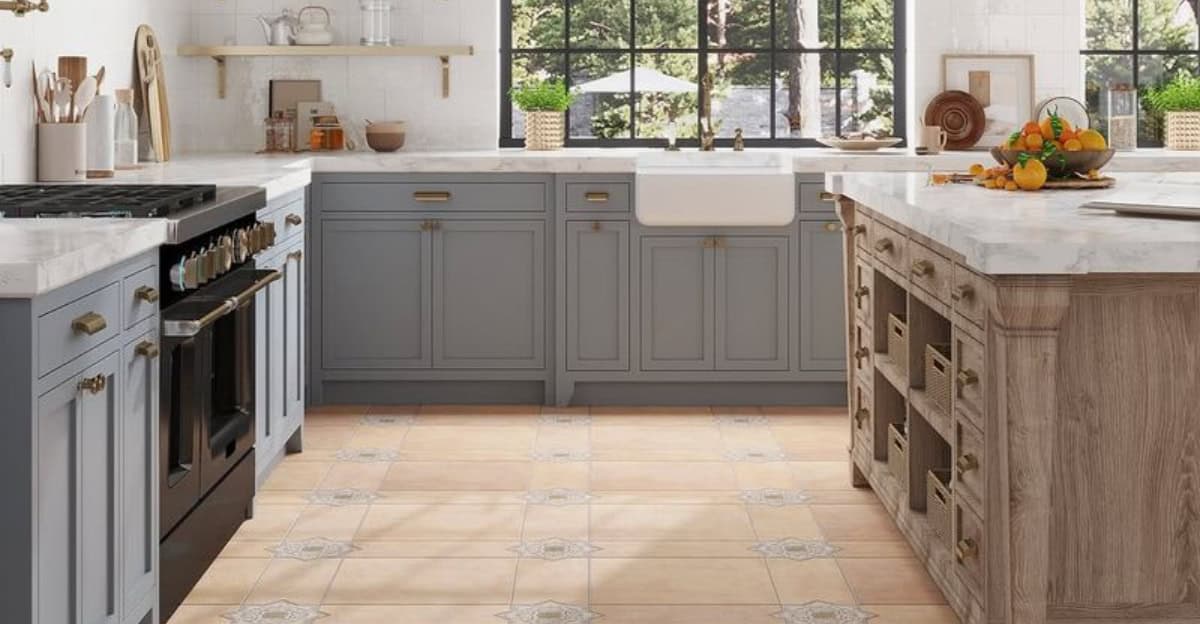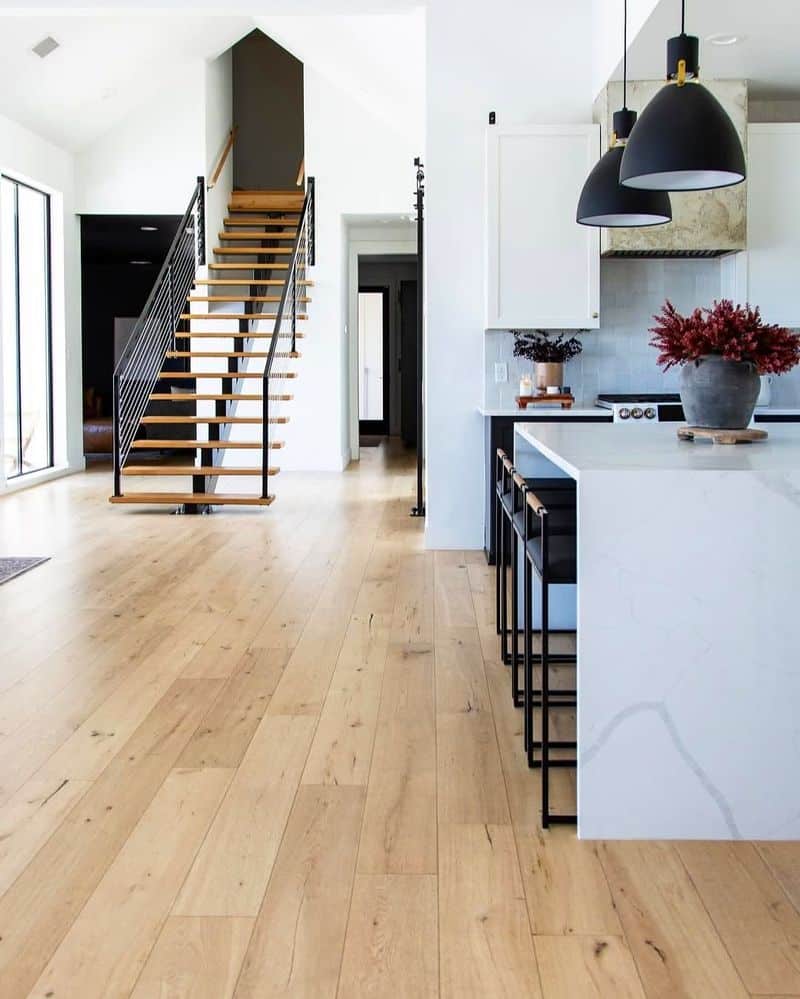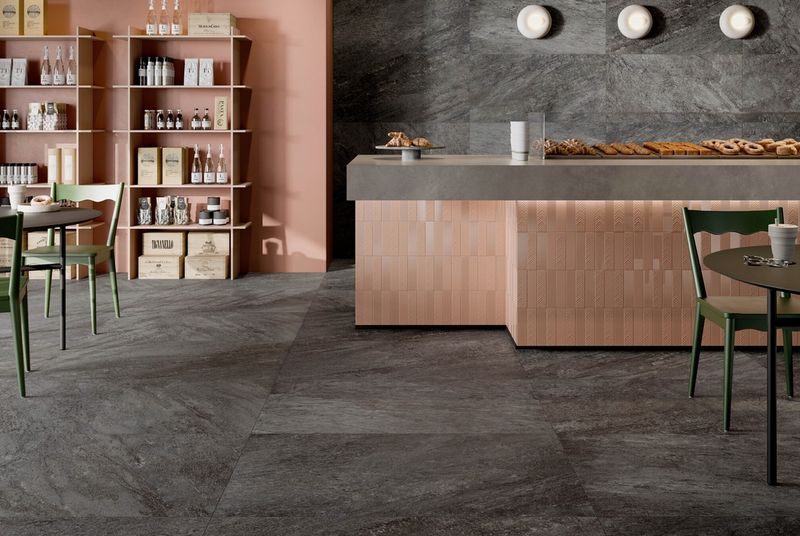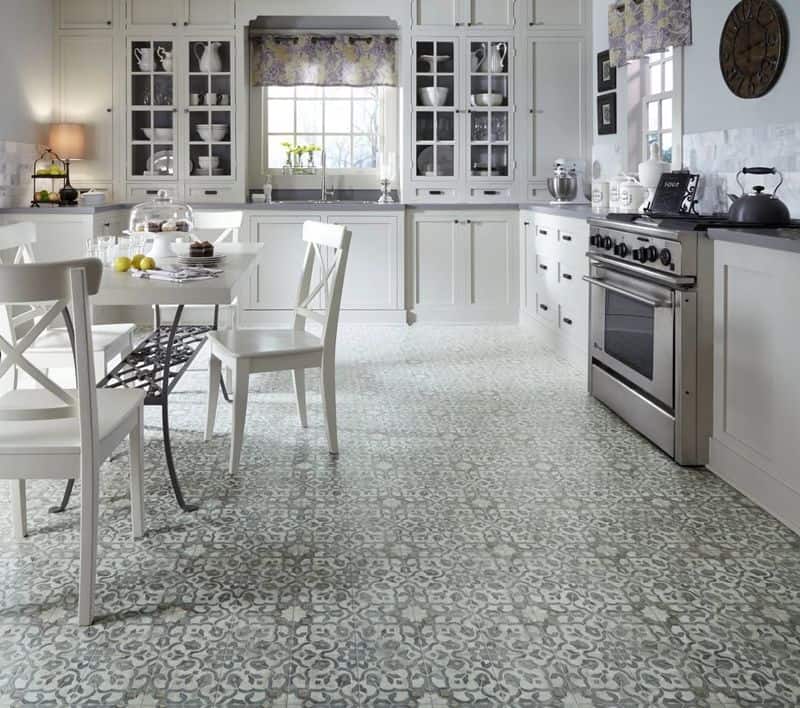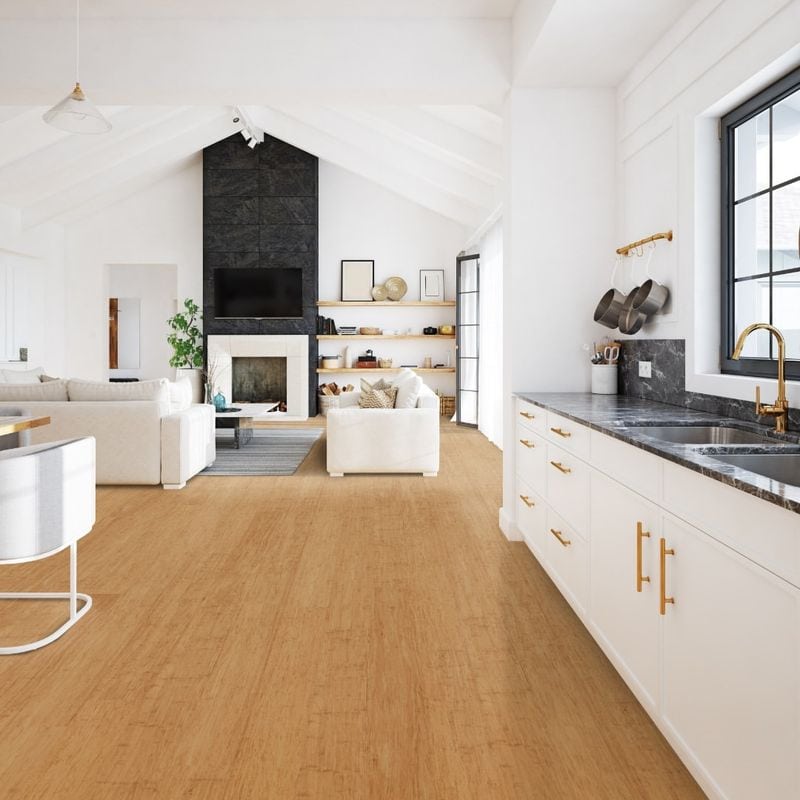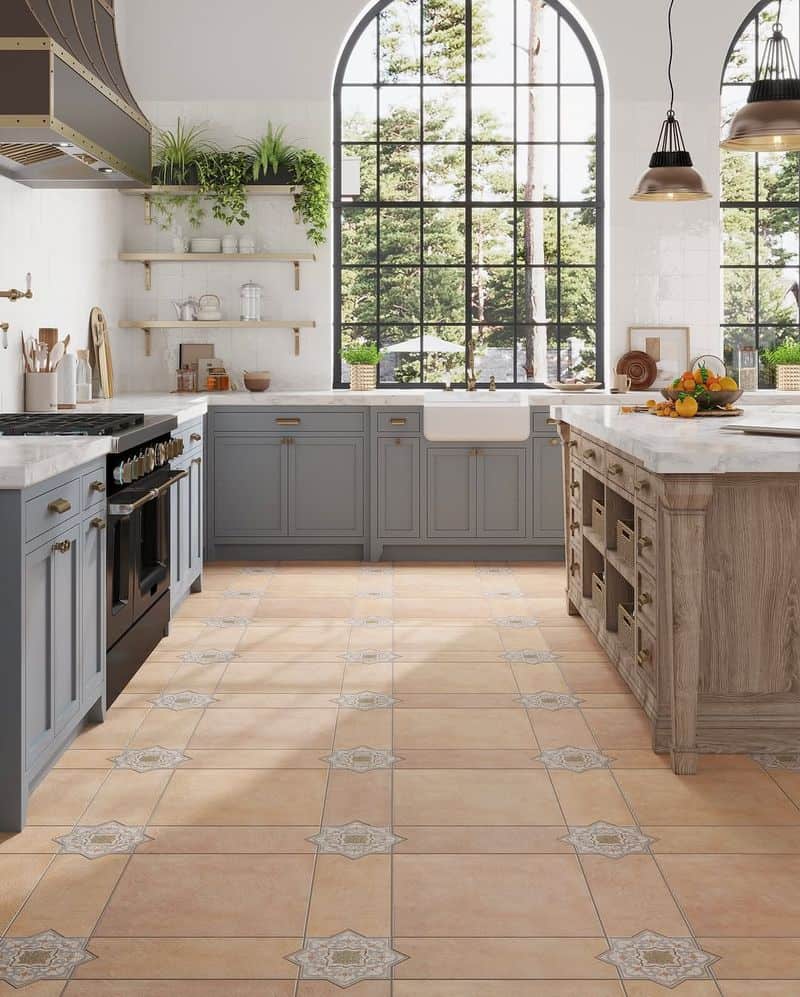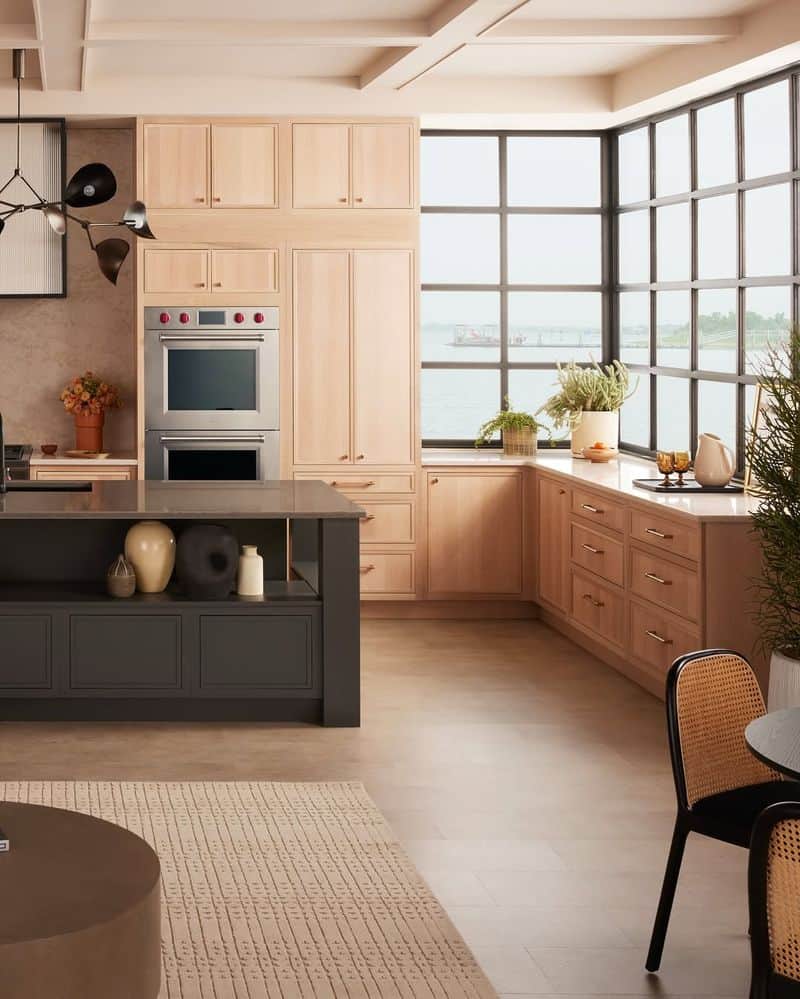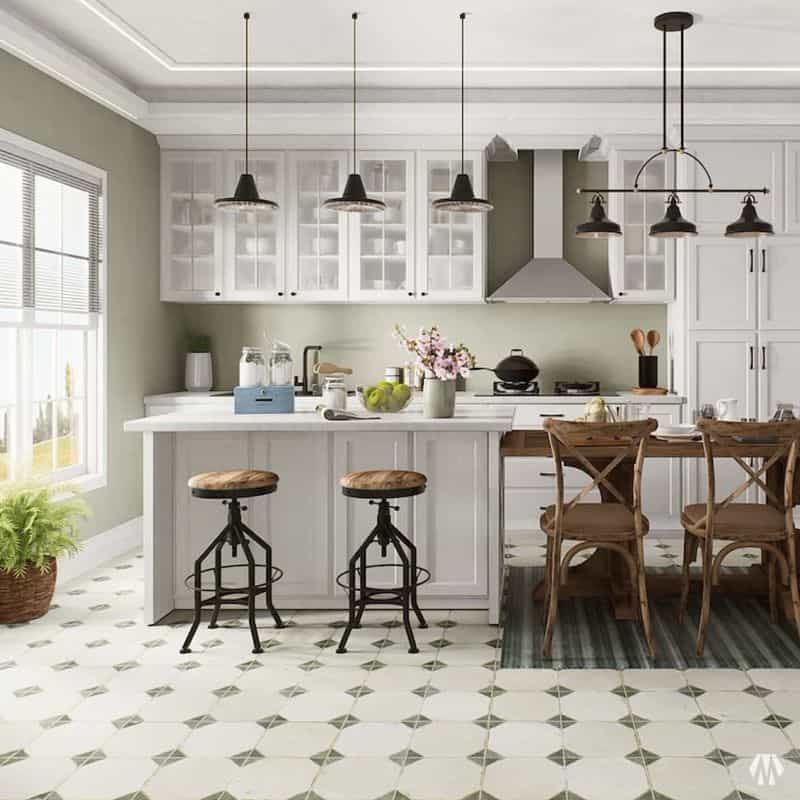Choosing the right flooring for your kitchen is crucial, not only for aesthetics but also for functionality and durability.
However, some options are less than ideal. Here, we explore the 10 worst kitchen flooring choices and their smarter alternatives.
1. Carpet vs. Luxury Vinyl Plank (LVP)
Carpet in the kitchen? It’s like wearing socks to a pool party. Sure, it’s comfy, but one spill and you’re in a soggy mess.
Carpets absorb stains and odors, making them a breeding ground for bacteria. Imagine dropping spaghetti sauce or curry; cleaning becomes a nightmare.
Enter Luxury Vinyl Plank (LVP), the superhero of kitchen flooring. It mimics hardwood’s elegance but resists water and stains.
With easy maintenance and durability, LVP offers both beauty and peace of mind. Plus, it doesn’t hold onto that garlic aroma from last night’s dinner. A practical and stylish choice!
2. Solid Hardwood vs. Engineered Hardwood
Solid hardwood in the kitchen might sound posh, but it’s like inviting a cat to a dog party—beautiful but prone to trouble.
Moisture and spills can cause warping and damage. The regular maintenance required is a headache you don’t need.
Engineered hardwood steps in as the smart alternative. With a layered core design, it withstands humidity and spills much better than its solid cousin.
It offers the rich look of wood without the maintenance woes. You get style, strength, and sanity!
3. Laminate vs. Porcelain Tile
Laminate might seem like a budget-friendly hero, but in the kitchen, it’s a bit of a villain. Water is its kryptonite, causing swelling and damage. Scratches are another annoyance, leaving it looking tired quickly.
Porcelain tile steps up as the trusty sidekick. Water-resistant and tough against scratches, it’s built for kitchen chaos.
Available in various designs, it can mimic natural stone or wood. Porcelain brings both durability and style, saving you from laminate’s pitfalls.
4. Marble vs. Quartz Tiles
Marble floors in the kitchen are like a high-maintenance celebrity. They’re stunning but need constant pampering. Prone to scratches and stains, marble is not the most practical choice for a busy kitchen.
Quartz tiles, however, offer a robust alternative. They resist scratches and are less porous, making them more stain-resistant.
Quartz provides the elegance of marble without the endless upkeep, bringing beauty and practicality together in harmony.
5. Linoleum vs. Sheet Vinyl
Linoleum might evoke nostalgia, but in the kitchen, it’s a bit like an old sitcom—charming but outdated. It can wear unevenly and is susceptible to moisture damage.
Sheet vinyl swoops in with a modern update. It’s water-resistant and available in endless designs, from wood to stone looks.
Easy to clean and maintain, sheet vinyl offers both style and practicality, leaving linoleum in the past.
6. Cork vs. Bamboo Flooring
Cork flooring in the kitchen sounds eco-friendly, but it’s a bit like a delicate flower. Soft and prone to dents, it can discolor from sunlight and water exposure.
Bamboo flooring steps up as the eco-conscious choice with added durability. It offers a similar warmth to cork but is much tougher against wear and tear.
Bamboo provides a sustainable option without compromising on strength or style.
7. Glossy Tile vs. Matte-Finish Porcelain Tile
Glossy tiles may look elegant but turn your kitchen into a skating rink. Slippery when wet, they pose a risk to clumsy cooks and energetic pets.
Matte-finish porcelain tiles offer a safer, stylish solution. They maintain elegance without the slip factor, providing traction for safer movement.
Available in various styles, they combine aesthetics and practicality, making them a smart choice for busy kitchens.
8. Softwoods vs. Tiles
Softwoods in the kitchen? They’re like inviting a teddy bear to a barbecue—nice but not built for the heat. Prone to scratches and dents, softwoods can quickly look worn.
Tiles, on the other hand, bring durability and ease of care. They resist scratches and dents, making them ideal for a bustling kitchen.
Tiles offer a range of designs, providing both function and flair without the worry of softwood’s shortcomings.
9. Parquet Wood Flooring vs. Luxury Vinyl Tile (LVT)
Parquet wood flooring brings a retro vibe but requires high maintenance and can warp. It’s like keeping a vintage car polished and running.
Luxury Vinyl Tile (LVT) offers a contemporary twist. It mimics the parquet look without the upkeep.
Resistant to moisture and wear, LVT provides the aesthetic charm of wood with the resilience of vinyl, making it a top alternative for modern kitchens.
10. Microcement vs. Textured Ceramic Tile
Microcement may sound trendy but is prone to cracks and chips, especially in high-traffic areas. It’s like wearing white shoes to a mud festival—looks great, but only briefly.
Textured ceramic tiles offer a solid alternative, providing durability and slip resistance. They come in various designs and can withstand the kitchen’s demands.
A practical choice with aesthetic appeal, they stand up to the challenges that microcement can’t.

